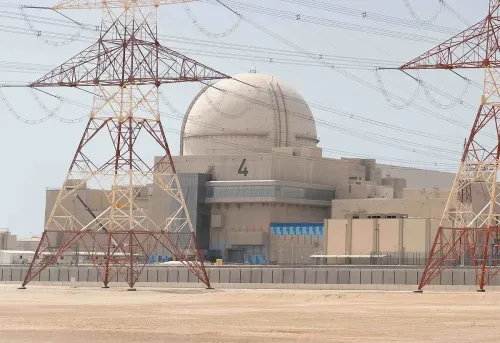Have India's battery storage operations become profitable for the first time in 2024?

Synopsis
Key Takeaways
- Merchant BESS achieved profitability for the first time in 2024.
- Projected IRR of 17% for new projects in 2025.
- Battery costs have dropped by 80% in the last decade.
- Power market volatility creates opportunities for revenue generation.
- Participation in the DAM is crucial for battery investments.
New Delhi, Aug 5 (NationPress) India's battery energy storage systems (BESS), which operate without fixed contracts and are termed merchant BESS, have achieved profitability for the first time in 2024. Additionally, newly commissioned battery projects in 2025 are projected to yield internal rates of return (IRR) of 17 percent through their participation in power exchanges, primarily due to anticipated reductions in initial costs, according to a recent report.
The report by Ember, an energy think tank, highlights that declining battery prices and increased revenues from fluctuating power markets have driven this significant transition. Over the last ten years, battery costs have plummeted by approximately 80 percent, decreasing from Rs 7.9 million per megawatt-hour (MWh) in 2015 to Rs 1.7 million per MWh by 2025.
Simultaneously, potential revenue from market engagement has surged fivefold during the same timeframe, rising from INR 0.5 million per MWh in 2015 to Rs 2.4 million per MWh in 2025.
Consequently, in 2024, revenues from merchant BESS exceeded costs for the first time, establishing it as a viable asset for the electricity grid, as per the report.
“Merchant BESS has frequently been perceived as a low-yield investment; however, the evolving dynamics of the wholesale power market, characterized by increasing price volatility and declining battery costs, have transformed it into a lucrative investment opportunity,” stated Duttatreya Das, an energy analyst at Ember.
“Battery systems capitalize on low-cost energy by charging during off-peak hours—typically sunny periods—and release electricity back to the grid when demand surges, effectively managing price volatility while generating significant revenue,” he added.
The report indicates that peak prices in the day-ahead market (DAM) are hitting new heights, while troughs are becoming more pronounced.
This heightened price volatility in recent years has opened new avenues for merchant batteries to generate value.
The report outlines that electricity prices neared the current cap of Rs 10/kilowatt-hour (kWh) during one out of every six hours from 2022 to 2024. In contrast, average midday power prices dipped by nearly 20 percent from 2022 to 2024 throughout the summer months.
It is projected that power prices will continue to fluctuate on exchanges, and by engaging in DAM, merchant BESS investments could yield an internal rate of return of up to 17 percent from investments made in 2025.
“The potential applications for batteries are numerous; participation in the merchant market is one that has been somewhat overlooked until now,” remarked Satyadeep Jain, Director of Equity Research at Ambit Private Limited.








